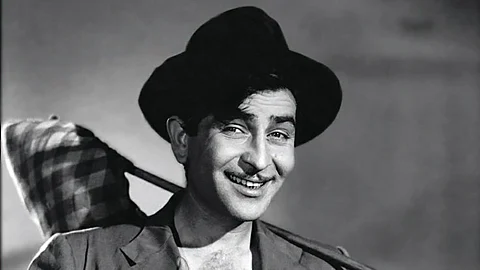
- HOMEGROWN WORLD
- #HGCREATORS
- #HGEXPLORE
- #HGVOICES
- #HGSHOP
- CAREERS
- ABOUT US
- CONTACT US

In 2019, a pirated copy of the Aamir Khan-starrer '3 Idiots' (2009) went viral in China, turning Khan into an overnight sensation in the country and making him synonymous with Bollywood films in the Chinese imagination. But Aamir Khan wasn't the first Indian filmstar to command such a fan following in China; that honour goes to Raj Kapoor.
Long before Aamir Khan's everyman genius Rancho snuck past China's social media censorship, Kapoor's films like Awaara (1951), Shree 420 (1955), and Barsaat (1949) became unlikely cultural phenomena in China. Released during the 1950s and 70s — a period of significant societal transformation and relative global isolation for China — these films offered a potent mix of sweeping melodrama and unforgettable music. Kapoor's portrayal of the underdog, struggling against social injustice while holding on to love and idealism against great odds, resonated with Chinese audiences navigating their own complex realities. His Chaplinesque charm transcended political differences and offered Chinese audiences vibrant, emotionally rich popular cinema distinct from Western cinema's perceived capitalism.
In 1955, the Indian People's Theater Association took Awaara to China as an act of cultural exchange and diplomacy. The film's swift ascent to popularity there spoke to an ideological kinship — so much so that Mao Zedong himself was said to be a fan of the film and its title song, Awaara Hoon.
Beyond its socialist leanings, the film's meditation on nature versus nurture struck a deep chord with Chinese audiences. Despite differences in culture, history, and politics, Chinese viewers found in its narrative echoes of their own experience of national transformation. Yet Kapoor's stardom wasn't completely immune to politics and Awaara's fortunes were closely tied with the shifting political climate in China. By the mid-1960s, during the Cultural Revolution, the film was condemned as a "corrupting bourgeois weed", and faded from public view. It would not re-emerge until after the social and economic reforms of 1979, when it once again captured the public imagination.
This time, however, the film's resurgence was less about ideology and more about shared cultural values: the centrality of family, the bond between parent and child, and the importance of education. Awaara's lush melodrama, vibrant song-and-dance numbers, and unabashed sentimentality — now hallmarks of Bollywood — took centre stage, cementing Raj Kapoor's legendary status in the canon of classic Indian cinema, both in India and China.
In the late 20th century, Raj Kapoor significantly elevated Indian cinema's status in China. Today, Aamir Khan represents a new chapter in that tradition with his rising popularity across the Chinese mainland. Bollywood's global popularity highlights its profound role as a cultural ambassador and a tool of soft power for India. Where formal diplomacy stumbles and falls, the universal appeal of Bollywood builds bridges. Golden age Bollywood classics like Raj Kapoor's Awaara and Shree 420, represent Indian values — outward emotional expressiveness, familial bonds, resilience, and an affinity for joy — in a way that is accessible and deeply appealing worldwide and across time, from the Soviet Union to Egypt, and even most unexpectedly, in China.
